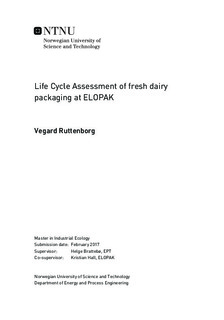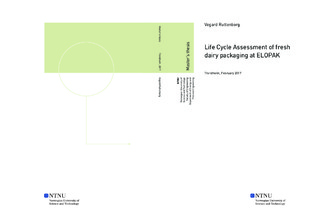| dc.description.abstract | Nearly all food and drink products require some packaging, and the impact from production
and consumption is causing a strain on the environment. To counteract the bad
effects, business is emphasizing the environmental performance of products and therefore
utilising Life Cycle Assessment as a tool to quantify the environmental impacts from a
products life cycle. Elopak, which is an International supplier of paper-based packaging
for liquid food, is a such company. This thesis is a Life Cycle Assessment focusing on an
Elopak 1-liter beverage carton for fresh milk.
The main goal of this study is to quantify the environmental impact in a cradle-to-grave
perspective. Also, to point out which life cycle phases that contribute most to impacts
and to suggest strategies improving the system environmental performance. The product
system is assessed in a European context and the reference time of primary data is set
to the year 2015. Materials in the beverage carton consist mainly of liquid packaging
board (LPB), and polyethylene (PE) for coating and closure. Important phases which
are excluded from this study is retail and consumer activities.
Results from this study show an impact of 45 g CO2 -eq for climate change, 57,7 mg
P O3
4− -eq for eutrophication, 79,1 mg NMVOC for photochemical oxidant formation and
154,6 mg SO2 -eq for terrestrial acidification. The most contributing life cycle phases
prove to be the production of raw materials in primary packaging where the impacts are
dominated by the production of LPB and PE resins. Important strategies for improving
the environmental performance of the product system is to ensure that raw materials have
a low impact. This can be done by choosing environmentally friendly materials such as
renewable plastics, reducing its weight and by improving production processes. Additionally,
recycling should be encouraged to substitute the production of virgin materials. | |

